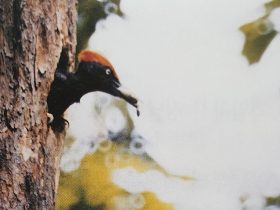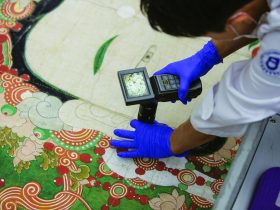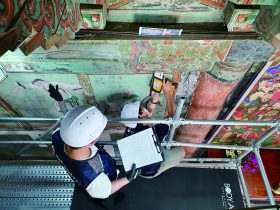Research Division of Artistic Heritage
LEE Jongsuk


Literati paintings are paintings created by Confucian scholars, who were not professional artists, as a means of personal expression. Such painting was all the rage during the Joseon period; its most representative figure was Kim Jeong-hui (1786–1856), a scholar from the late Joseon period; and his Sehando (Winter Scene) stands out as the epitome of Korean literati painting and a National Treasure.
In the Joseon period, poetry, calligraphy and painting were regarded as the three virtues of the literati. Accordingly, Korean Confucian scholars enjoyed expressing their thoughts and feelings by writing poems and making calligraphies and paintings according to occasions.
Sehando is considered a masterpiece because the artist’s mind is most appropriately expressed in this painting. As such, we need to understand Kim Jeong-hui to properly appreciate his best work.
The Sudden Exile of a Wellborn Man
Born to a noble family, Kim Jeong-hui made a name for himself as an international scholar and calligrapher. His prestigious lineage, erudition, and artistic talent made him well-known even in China and attracted many followers. Later, his family was devastated by political persecution, and Kim was exiled to Jeju Island in 1840 at the age of 55. Exile from Seoul, the royal capital, was considered harsh punishment to noblemen at the time, and for Kim, who had a comfortable life until then, found it extremely difficult to live in exile on Jeju Island.
A Painting of Appreciation for Unwavering Friendship
During Kim’s exile, his only friend and a disciple was Yi Sang-jeok (1804–1865). A famed Korean–Chinese interpreter, Yi brought rare books and the latest information to Kim Jeong-hui whenever he returned from his trips to Yanjing (the former name of Beijing during the Qing Dynasty). Kim wanted to express his gratitude for Yi’s enduring support, giving rise to Sehando as a token of appreciation.
Warmth of Kindness Felt on the Coldest Day of Life
The word ‘sehan’ (세한) means the coldest day of the year. The large span of empty space in the painting intimates the coldest time of the artist’s life, and at the center, a house named ‘Wandang’ can be found. The evergreen pine and pine nut trees, known as ‘Songbaek’ (송백), symbolize Yi, who treated Kim in the same way both before and after his exile. They are also an expression of Kim’s praise and appreciation for his disciple. In the left portion of the painting is a letter, where characters are written on a grid as if Kim tried to inscribe his words of gratitude on a rock one character at a time. At the right bottom of the painting is a seal featuring a four-character idiom that states, “Let us not forget each other for a long time.”






Leave a Reply